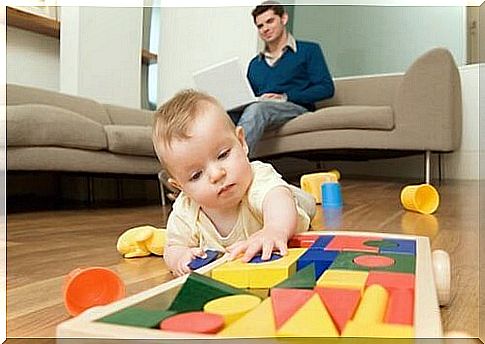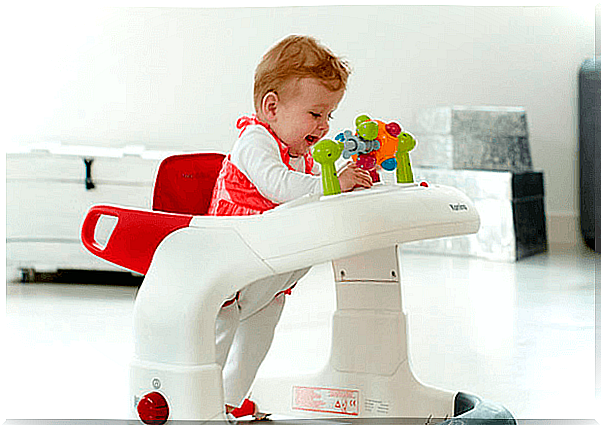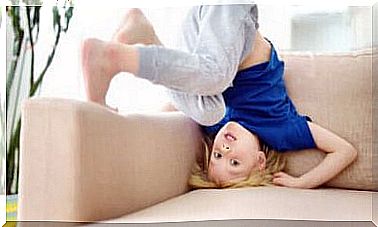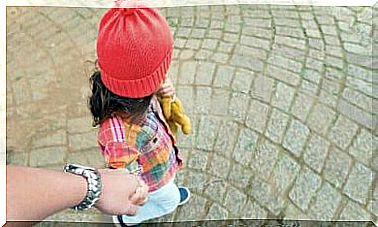Avoid These Mistakes When Your Child Learns To Walk

The stimulation required for a child’s development depends on the child’s stage of development. At some stages, less stimulation is needed, but each stage of development is still important. For example, prenatal stimulation is sometimes completely left out of the calculations as the child learns to walk.
Stimulation is also ignored in other stages of infancy. Although this is also a better option than performing the stimulation incorrectly.
As children develop, they are able to learn many things for themselves. They are able to perform certain tasks or achieve goals with little or no help.
Nevertheless, it is important for a child to receive support and encouragement from their parents. The presence of mother and father at every stage of learning should be holistic and patient.
Stimulation is important for a child’s development. This also includes providing the child with the tools he or she needs to adapt to his or her environment.
However, there are things that parents should avoid. In some cases, parents take things too far, and overstimulation doesn’t do the child any good, nor do certain stimulation methods.
Avoid these mistakes as your child learns to walk
Parents have the right to choose their own way of raising their children. However, experts in the field have concluded that we sometimes make mistakes that should be avoided where possible.
It is believed that the most common stimulation-related mistakes are made at the stage when the child learns to walk. To ensure that our own bad habits do not affect our children, it is a good idea to take a moment to review the following recommendations.
1. Do not force a child to walk
Avoid taking your child by the hand to “help” him or her walk. It is better to encourage the child to walk on their own, as this leads to the child’s autonomy. A child should not be forced to walk if he or she does not want to do it or is not ready to do so. It is important that the child is allowed to make their own decisions about their movement.
2. Try not to be afraid
It is important to let the child become familiar with their new skill. As parents, we should be supporting the child without putting pressure on him or her. The child should never feel embarrassed by too high expectations or fear.
3. Using the stroller

In fact, using a stroller as an aid can delay the moment a child feels ready to walk without support. In the worst case, the use of a stroller can have long-term structural effects on a child’s feet. Strollers are also one of the most common causes of accidents at home for children.
4. Wearing shoes
A child’s feet do not need the support of rigid shoes. On the contrary, the child should be allowed to walk as much as possible barefoot. According to experts, the soles of the feet continue to develop at the stage when the child begins to learn to walk. We imagine we are doing a service to a child by putting on shoes for him, but in reality we can cause him harm.
If you want your child to wear shoes, choose flexible-soled footwear. The sole purpose of the shoes should be to prevent slipping and possible injuries. Shoes that interfere with the formation of the arch of the foot can cause loss of balance when walking.
5. Overstimulation
It is common for parents to use toys to entice a child to walk. However, care must be taken to ensure that the child’s concentration does not slacken from performing the actual task. The toy chosen should be one that the child can only play with and nothing else.
This toy or other object must not present any danger and must be capable of being used as a single center point. Do not overstimulate the child with too many objects at once. Also, do not choose a toy that has flashing lights or produces sound, as these stimuli can be too stimulating for a child’s senses.
6. Installing the mobile in the wrong place
When decorating a child’s room, the mobile may be hung in the wrong place. The benefits of the mobile are wasted if it is installed next to a crib or playpen or too high.
The right place for the mobile is directly above the child’s bed. It should be hung at a height that allows the baby to focus on touching the Mobile. This motivates the child to move and prevents the child’s neck from being misaligned.
7. Planting a child without support

If the child is not yet able to sit on his or her own, he or she must be provided with proper support in a sitting position. It is common for a child under the age of five months to be raised to a sitting position and placed on a cushion.
This can be dangerous if the child’s body is not yet ready to master this position. Placing a child to sit too early in development can actually cause a decrease in muscle activation.
8. Running ahead of the child
Many parents try to motivate the child to walk by running ahead of this and encouraging the child to follow themselves. As the child takes a step, the parent moves farther and farther so that the child is forced to continue walking. This is not a bad thing, but a parent should not move if a child is just about to catch him.
In other words, if your child is walking and just about to catch you, let him or her achieve his or her goals. This prevents the child from getting frustrated. If you constantly move further away so that the child does not catch you, he will lose interest in the play.
9. Walking with arms up
When a child learns to walk, the right way to support him is to place his hands below his armpits or at pelvic level. According to experts, this way the child learns to walk naturally. No one walks their hands in the air, so it’s best to teach your child to walk in the right position from the start.









